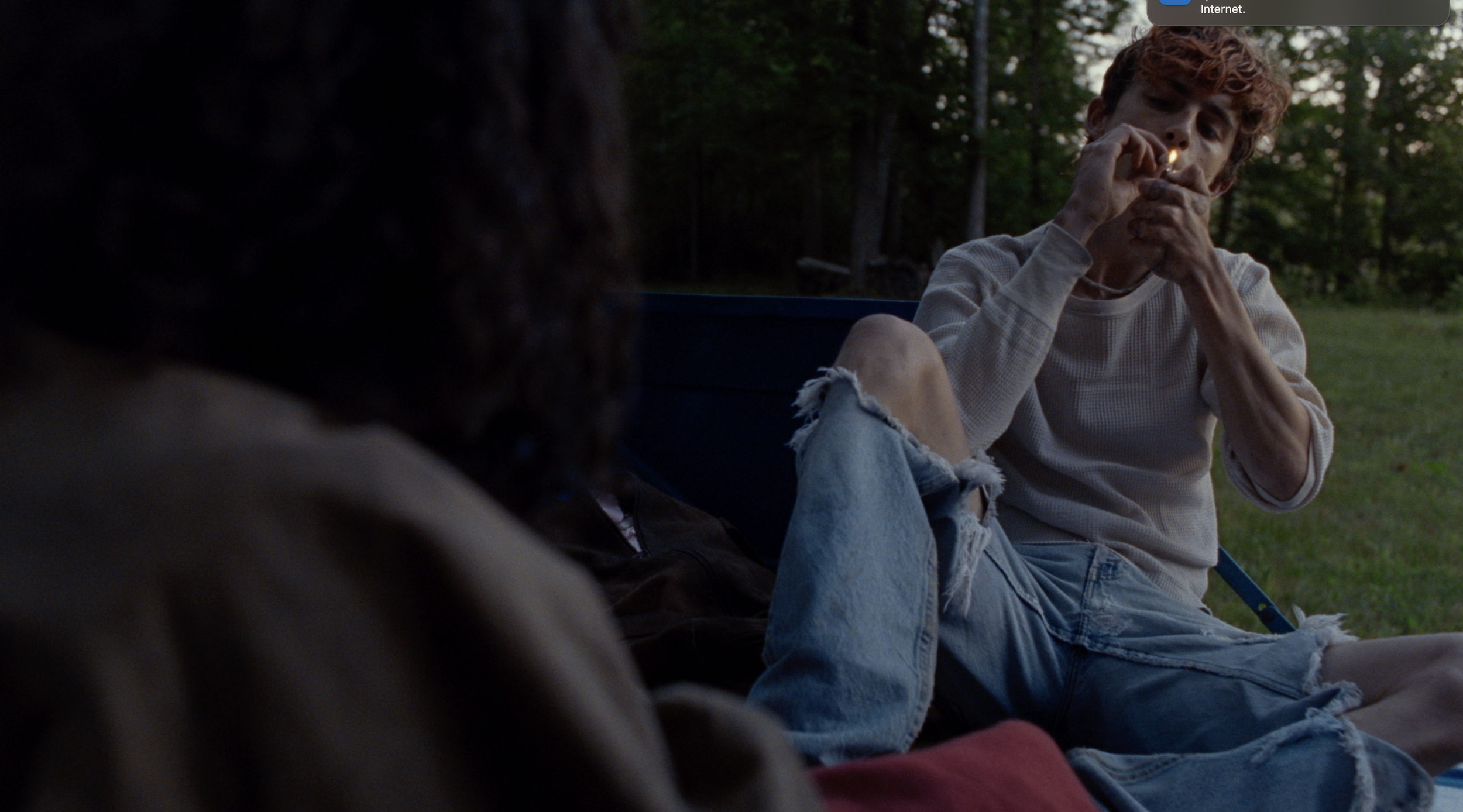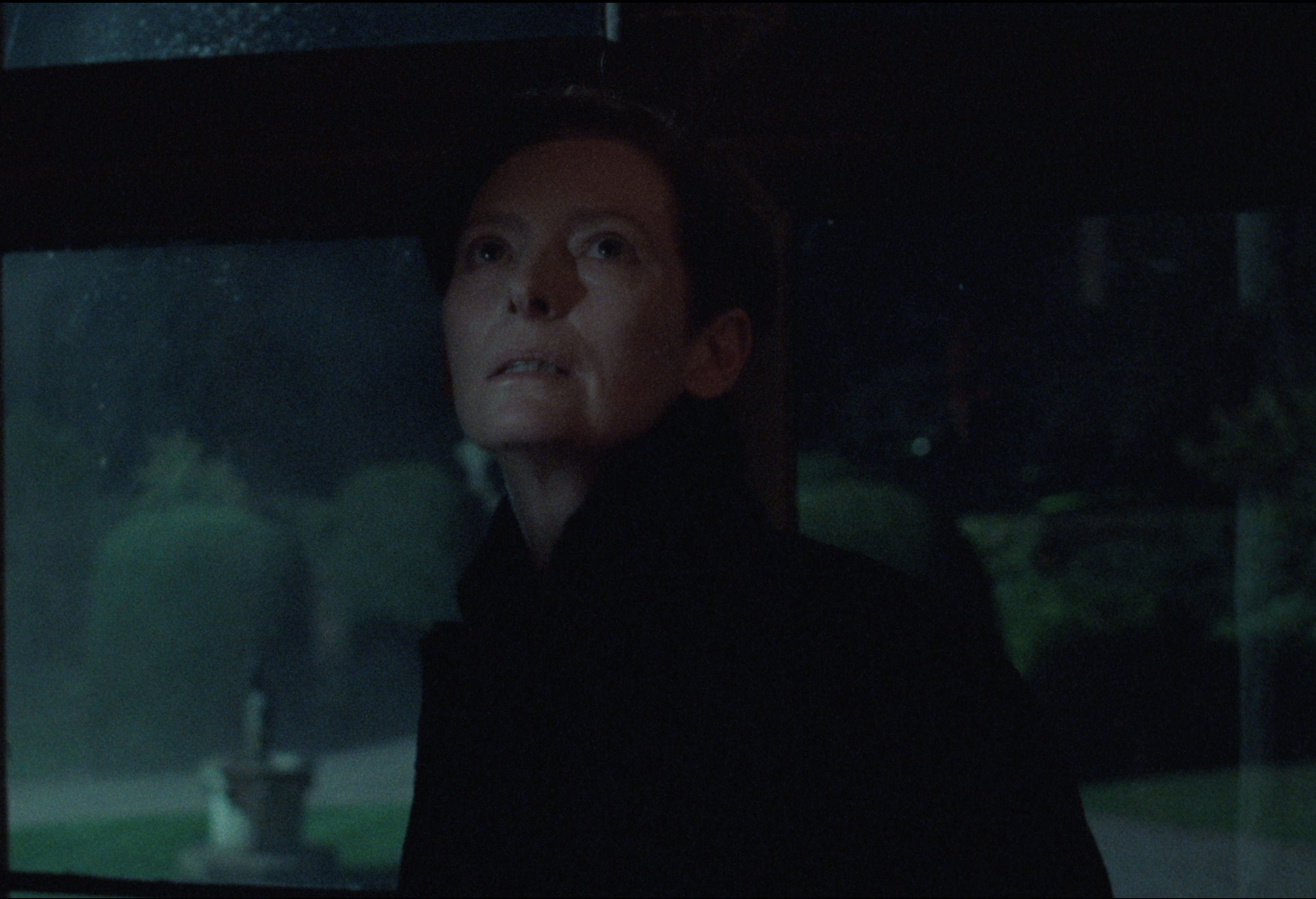Bones and All Directed by Luca Guadagnino
Bones and All
Directed by Luca Guadagnino
Starrings: Timothée Chalamet, Taylor Russell, Michael Stuhlbarg, Chloë Sevigny, Mark Rylance, David Gordon Green, Jessica Harper, Francesca Scorsese, Anna Cobb, André Holland, Jake Horowitz, Anna Sheridan, Johanna McGinley, Max Soliz, Kendle Coffey, Karen Olchovy, Madeleine Hall, Greg Siewny, Ellie Parker, Tom O'Brien, Rachel J. Jones
Country: Italy, USA
Year 2022
Author Review: Roberto Matteucci
Click Here for Italian Version
“I feel like some kind of weird new superhero.”
The researcher Ewald Volhard in his fundamental essay on anthropophagy – Cannibalism - describes cannibalism as an "extraordinary richness of forms and the multiplicity of actions.” (1)
In the details of multiplicity, Ewald Volhard distinguishes four groups of cannibalism: profane, juridical, magical and ritual.
In the profane, men eat human flesh and other animals meat without distinction. They do not eat for hunger but for taste, and they eat with ease and naturalness.
In the juridical one, being eaten is the punishment for crimes committed.
In magical, there is the belief in acquiring strength and power by consuming the bodies of one's own tribe or the opposing one.
The ritual one is inserted into a rite. During ceremony hosts eat human flesh; it is a privilege granted to a select few.
In which anthropophagy group can the of the protagonists of Bones and All, the film by Luca Guadagnino presented at the 79th Venice Film Festival, be pigeonholed?
The answer is obvious, perhaps in every, perhaps for none. Or perhaps nobody knows!
For centuries, cannibals have been unanimously considered abominable and disgusting. Therefore, they must be expelled from society. Are cannibals evil? Luca Guadagnino follows this thought. He believes he is Dante Alighieri when he writes about Ugolino della Gherardesca in the Antenora, the second zone of the ninth circle of Inferno in the Divine Comedy.
Guadagnino's career is remarkable. He is Italian with numerous American connections. He delights the public with over-the-top films, often catalysts for ridicule, disapproval and insults. Memorable was the premiere of Io sono l'amore – I am Love at the 66th Venice Film Festival. The boos flooded the cast, causing pity for the protesters themselves. Yet, Io sono l'amore – I am Love gives Guadagnino success and fame in America.
It remains a mystery to understand by what reasoning Guadagnino is an obligation, a tax, a threatening foresight, a condemnation, to deliver him a prize regardless. Therefore, winning the Golden Lion for Best Director for Bones and All is a ticket and not an honour.
The Midwest extends from neighbouring states to the Great Lakes in the east. It is in twelve states. A vast plain is the main physical feature of the area. Historically, it is a conservative region where the small towns maintain the charm of another era. In a Virginia school theatre, two classmates meet. One, Maren, is shy and clumsy. The other is her classmate, casual and outgoing. She invited Maren to a sleepover at her house. Maren lives with her father. He does not allow her to go out at night. To prevent this, the parent locks her in the bedroom. Maren wishes to have a friend, so she runs away through the window and joins her. They have a moment of intimacy lying on the carpet. Involuntarily, her friend moves her finger close to Maren's mouth. Suddenly, Maren grabs her finger and bites it off. A fast beginning, lightning, full of anxiety. Maren has to disappear. His father accompanied him but, having found a new safe place, he abandoned her. Unlike Maren, he is not a cannibal and, despite loving her daughter, he can no longer handle the situation. Maren begins a long and lonely journey. American cannibals have an extravagant attitude. They smell and recognize each other. In a supermarket, she is harassed by a rude stalker. Lee, another cannibal, a sexy young homeless man, rescues her. After the initial acquaintance, following Me Too dictates, they eat the molester.
Together, they escape in a van: Maryland, Missouri, Iowa, Minnesota and Nebraska. Real life on the road.
Luca Guadagnino is ambitious. The narration is full of classic themes: on the road, loneliness, kitsch sociology, horror, love story, coming of age and cannibalism.
Maren and Lee are cannibals. Under their good looks, they kill and feed on corpses. They have no friends and everyone avoids them. Guadagnino explains the concept of marginalization:
"The term marginalized is fundamental. I have this idea of isolation, I think we all experienced deep isolation during the pandemic, but we need contacts to understand who we are. … This film made during the pandemic period and this feeling of not knowing whoever their tribe is, the lack of social contacts struck us. The protagonists do not have a real identity but thanks to love they find the courage to grow." (2)
Only during the pandemic, the director learned about how adolescents can experience problems with growth, mood, and relationships. If the pandemic hadn't happened, he wouldn't have understood it. According to him, before, these tensions did not exist.
While travelling, the couple knows each other better, comparing experiences and obviously including the hidden ones.
The Midwest, the silent and temperamental province, is the other argument. It is intriguing to observe an Italian take possession of these typical American subjects and try to reinforce their meaning:
“I have seen a country so desperately attached to a set of values that was visually reflected in the images of the 1980s… I believe the United States is immersed in a nostalgia for itself that makes it the most forward-thinking and also the most frozen country.” (3)
The Midwest is perfect for the plot. If the cannibals Maren and Lee lived in New York, they would be snubbed and assumed to be eccentric. Instead, in the Midwest, they have to flee as soon as they bite a phalanx.
The film is also a love story. Lee and Maren love each other; they find each other pleasant. It is intense love:
"My Bones and all? It's a cannibal film, but also the most intense love story I've shot." (4)
Of course, Lee and Maren's affair is difficult. Any teenage sweetheart has unmistakable hormonal and communication barriers, even if they do not eat hamburgers with human flesh. They share their secrets and forgive each other for everything, even homosexual getaways to a park to get a fresh body.
Finally, cannibalism:
“There has been a lot of emphasis on the issue of cannibalism because it is true, the protagonists rather than cannibals are 'eaters', they have this kind of disease, they can not resist, nature doomed to be this thing. But within this impossible nature that tears them away from society and makes them marginalized, a love story is born between the character of Taylor Russell and that of Chalamet and the film, for me, is perhaps the most intense love story that I shot, which is almost final, as a love story." (5)
Guadagnino's opinion is interesting, as he considers cannibalism a disease. Based on his cultural approach, it seemed likely that he thought a vaccine would be developed against cannibalism. It is embarrassing when he accuses society of cannibal phobia. He confirms the lack of quality cinema in the writing of subjects and screenplays for cultural submission to nefarious rules. Let's abolish sociology and psychology, and genuine cinema will return.
The two boys are the primary personalities.
As a result of her partial segregation, Maren has a limited understanding of life. She has a limited existence and she knows the tragic reason. Her solitude is deep. Her mother has been gone for many years. Even her father dumped her. On the other hand, she needs a peaceful reality. Maren is melancholy, tormented, scared and hopeless. These feelings make her bored and unstable. These justifications probably contributed to Taylor Russell winning the Mastroianni Award as the best emerging actress.
At least Lee is a rebel, while she is insecure and discouraged. It is possible that Lee is also worried and uneasy, but he does not show it. He is cynical, evil. He knows where to hit. He is homophobic. Among the many possible prey, he chooses an effeminate carousel. He thinks homosexuals are weak, but despite hatred, Lee sodomized him before killing him. Lee is mature, strong and disillusioned. He falls in love with the girl but fights his marginalization.
Maren seeks comparison and hope in her many dialogues. He wants to comprehend the feelings of the other cannibals. Lee is smart and conscious. She needs an accomplice and, in Lee, she finds the security and comfort of being able to share her behaviour. The discussions take place in the van (using this banality, the director is trying to evoke the idea of a road movie) parked in the countryside, in natural, serene, quiet locations in contrast to the angry stories.
The structure of Bones and All is composed of a quick and incisive character presentation. The author does not engage in artificial and slow psychological constructions. He also rightly skips the descriptive elements, getting right into the plot.
The conflict is immediate after a brief introduction. The awareness of cannibalism, the escape and meeting Maren's mother, the only person who could help her understand. It is a fragile section, uncertain, poorly written except for the appearance of the bizarre but human Sully, an old and compulsive cannibal.
Every bond is broken: the perception of reality, the desire for a normal, insignificant life, the judicious love, and most importantly, the cruel and determined conversation with the mother.
There are some irresolute plot twists but it is Sully’s attending that has improved the quality. Sully is a mixture of compassionate humanity and pitiful cannibalism. His shocking isolation is frightening and Maren tramples him with wickedness.
The director enhances the on-the-road. A road movie is a genre that is representative of American cinema. Guadagnino says:
“I have dreamed a lot of to direct films based on the American imagination. Perhaps I always tried to postpone the subject out of fear, until the opportunity manifested when David (Kajganich) showed me the script. The moment I read the script I inevitably saw something in this story that attracted me deeply, it was very natural." (6)
The road movie is the American imagination. Luca Guadagnino thinks it is enough to drive a pick-up on an endless, large road to intensify the topos of the journey. Actually, what he creates is a rehash of mediocrity and conformism. To Guadagnino, a road movie means one starts in a condition of sin or ignorance and gets worse ahead. The maximum superficiality is the recycling of the pick-up symbol, on which Timothée Chalamet poses.
The topos of horror is added to that on the road movie:
“Horror as a genre is less interesting because it plays with limited sets of rules, and repeating those rules can be fun if you want to mindlessly spend a day at the cinemas, with popcorn, watching Final Destination. Or it can be a strong experience, or that of a great intellectual who reflects on those codes, like Kubrick with The Shining. But mostly it's just repetition. It's like comfort food. Except that comfort food is the food that makes you sick after you eat it because while it tastes good at first, it's also heavy and too elaborate.
I say all this as a big horror movie fan and, thanks to Suspiria, as a director. I think I will continue to make horror films in my life, even if Bones and All is not a horror film.” (7)
Although Guadagnino discredited horror in the above interview, the genre has an authoritative cinematography with many exceptional authors, with films that have become classics. The value of horror is the writing, the ability to shape narratives with much more freedom. Guadagnino has already worked on horror, directed the Suspiria remake. An important, basic step: he professionally destroyed an impeccable film. It is Guadagnino's usual vanity, it terrifies viewers undeterred. This is authentic horror.
When tension does not appear, the director cleverly corrects it with a detailed soundtrack, which is excellent for covering the defects but perhaps it is excessive.
The photography is superior, as in Sully's house, with a disquieting light on the walls to increase the dramatic secret of the place, more disturbing expression of the hanging images of naked women.
The revealing flashback is oral. The father's voice is recorded on tape. The girl listens attentively in many episodes. Blood is scarce and the splat is not exploited.
The relationship between the teenagers is deliberately fake and affects dialogue. The camera is constantly on the characters. There is attention to their confrontation.
Some symbolic scenes. Maren has the conscience to free herself from the burden following the visit to her mother. She throws her mother's photo on the ground and runs away from Lee.
If Sully is the best-defined secondary figure, the merit is above all the acting of Mark Rylance. Maren's mother character, with her cut arms, is instead the lowest point.
Bones and All is boring, but it is not all Guadagnino's fault. The script has enough gaps to trigger the audience's self-destruction. The director's merit is to simplify the work with an eccentric linearity of the plot, excluding the recorded flashback.
Ethical principles do not exist; social ones are irrelevant and devoid of logic.
Rather than a horror film, the film resembles a parody.
And as Dante Alighieri said when speaking of the poetic anthropophagus Ugolino: "then fasting had more power than grief.” And it is a pain to reach the end. (7)
Ewald Volhard, Il cannibalismo. Civiltà, cultura, costumi degli antropofagi nel mondo, Mondadori, Milano, Oscar Storia, I edizione, 2019. Translated by the Author.
https://movieplayer.it/articoli/bones-and-all-intervista-timothee-chalame-luca-guadagnino-venezia-2022_27592/ translated by the Author.
https://www.ciakmagazine.it/festival/luca-guadagnino-lincontro-con-bones-and-all-e-con-timothee-chalamet/ translated by the Author.
https://www.repubblica.it/spettacoli/cinema/2022/07/28/news/guadagnino_bones_and_all_quella_tra_i_giovani_cannibali_sara_la_mia_storia_damore_piu_intensa-359500688/ translated by the Author.
https://www.repubblica.it/spettacoli/cinema/2022/07/28/news/guadagnino_bones_and_all_quella_tra_i_giovani_cannibali_sara_la_mia_storia_damore_piu_intensa-359500688/ translated by the Author.
https://movieplayer.it/articoli/bones-and-all-intervista-timothee-chalame-luca-guadagnino-venezia-2022_27592/ translated by the Author.
https://www.ciakmagazine.it/festival/luca-guadagnino-lincontro-con-bones-and-all-e-con-timothee-chalamet/ translated by the Author.
http://rodin-web.org/works/dante_ugolino_poem.html





















Are cannibals evil? Follows this idea Luca Guadagnino in the film Bonus and All presented at the 79th Venice Film Festival. Luca Guadagnino follows this thought. He believes he is Dante Alighieri when he writes about Ugolino della Gherardesca in the Antenora, the second zone of the ninth circle of Inferno in the Divine Comedy.